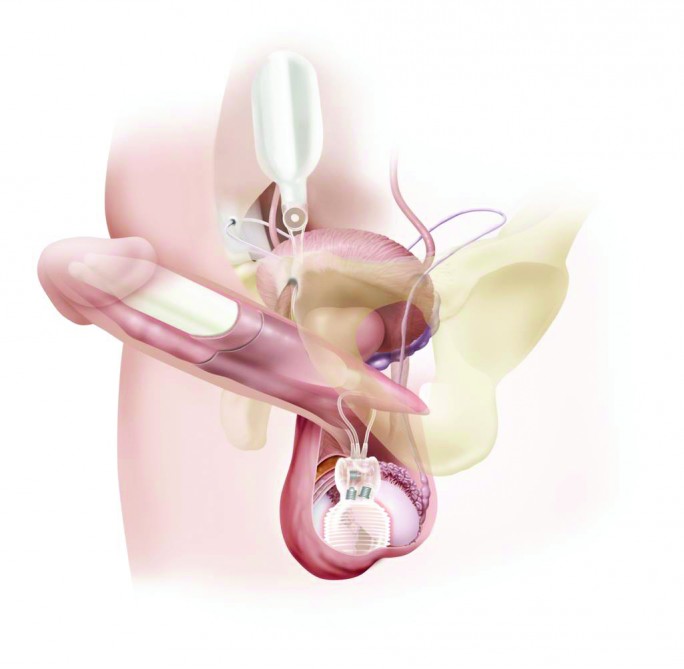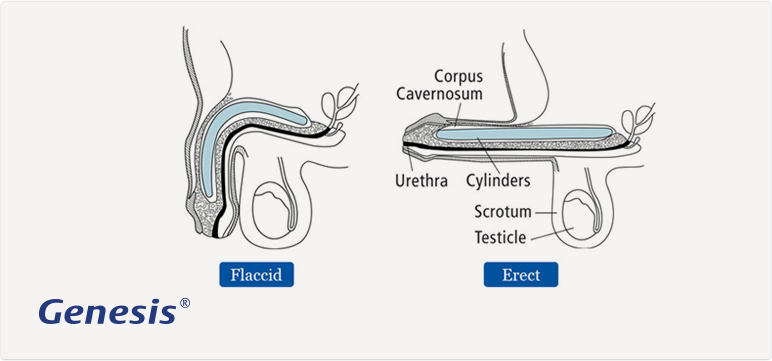Erectile Dysfunction (ED)
Evaluating and Treating Erectile Dysfunction
If you are dealing with erectile dysfunction (ED), you are not alone. Nearly one in every four men ages 60 and older experience some degree of erectile dysfunction. Younger men often struggle with ED as well. By taking the step to learn more about ED, you’ve already made an important move toward finding a solution. There are many treatment options and approaches available, and we’re here to guide you every step of the way.
Making an appointment
Our urologists offer leading-edge, evidence-based treatment options for patients living with erectile dysfunction. Along with treating patients medically for ED, we also perform a high volume of penile implants.
Please call us at 916-734-2222 to inquire about appointments.
What is ED?
Erectile dysfunction (ED) is the consistent inability to sustain an erection sufficient for sexual intercourse.
ED can be:
- A total inability to achieve an erection – You can never get an erection.
- An inconsistent ability to do so – You can only occasionally get an erection.
- A tendency to sustain only brief erections – You can get an erection, but can’t keep it long enough for satisfying sex.
What Causes ED?
ED is most commonly caused by medical conditions such as diabetes, high blood pressure or pelvic surgeries.
It can be caused by:
- An injury
- A disease (e.g., diabetes, high blood pressure or high cholesterol)
- Various studies estimate that 20-71% of individuals living with diabetes have erectile dysfunction
- An operation (e.g., prostate gland removal)
- Substance use (e.g., tobacco, drugs, alcohol or medications)
- Stress, anxiety, depression or psychological trauma
Other facts about ED
- Approximately 30 million American men live with erectile dysfunction.
- Most men living with erectile dysfunction can have an orgasm and father a child, but often have difficulty doing these things because they can’t get or sustain an erection.
- Erectile dysfunction is not normal, and is by no means an inevitable consequence of aging.
- Most men at one time or another during their sexual lives are unable to get or keep an erection. This is normal and does not indicate a problem. However, millions of men of all ages experience this inability as a continuing problem.
- In most cases, erectile dysfunction can be overcome using medical or surgical options.
How do we evaluate you for ED?
- We typically start with questionnaires such as the International Index of Erectile Function (IIEF) to determine the severity.
- Penile injections such as Trimix may be used to assess the quality of your erection and to differentiate among the many causes.
- Occasionally, a penile duplex ultrasound is indicated if there is concern for disease in the blood vessels or penile scarring.
Penile Duplex Ultrasound Image

Treatment Options for Erectile Dysfunction
There are several ways to treat erectile dysfunction, and your doctor can explain each option in detail. The best treatment for you should be decided together with your physician, taking into account your individual needs and the benefits and risks of each approach.
Drugs for treating erectile dysfunction can be taken orally, injected directly into the penis, or inserted into the urethra at the tip of the penis. The most commonly used drugs on the market today include:
|
Sildenafil |
Vardenafil |
Tadalafil |
Avanafil |
Some patients may experience side effects with these medications including:
- Headaches
- Facial blushing
- Upset stomach
- Mild and temporary visual effects
Some men may be able to gain an erection by using this medication. It involves the placement of a small pellet into the urethra which may subsequently cause the penis to become engorged with blood. This medication proves to be efficacious in only about 30% of men. Medication price is also an issue.
Some men may be able to gain an erection by self-injecting drugs into the penis, causing it to become engorged with blood. The advantage of injection therapy that it can easily be self-administered and in most patients leads to a strong erection when given the right dose. Potential side effects of injection therapy include: fibrosis (scarring) and long-lasting painful erections. Injections are shown to have a long-term dropout rate of about 37% – 76%. Reasons for dropping out of drug therapy include:
- Desire for a permanent treatment alternative
- Inadequate response
- Return of spontaneous erections
- Fear of needles
- Concern over side effects
Your doctor can provide you with specific details about the pros and cons of each of the following treatments:
- Lifestyle changes like stopping smoking, losing weight and eating healthier
- Vacuum Erection Devices
Some men find that the treatment options listed above are not suitable for them due to medical conditions, lifestyles, personal preference, or the treatment option may be ineffective. In this case, a penile implant may be an appropriate option.
Penile Implant
A penile implant is a device that is placed into a man’s body and is designed to help him get an erection. It is an alternative long-term treatment, that is covered by many insurance plans, which allows an erection as often as you like, for as long as you wish.
Three basic types of penile implants are available, including:
Inflatable "3-piece" Penile Implant

Malleable Penile Implant

Inflatable "2-piece" Penile Implant (AMS Ambicor™ Device)
This is a fluid-filled device that includes a pair of cylinders implanted in the penis and a single pump located in the scrotum. Squeezing and releasing the pump moves fluid to the cylinders, creating an erection.
